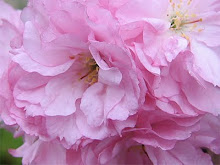In one of my favorite books, Kitchen Herbs,
by Sal Gilbertie, he gives several recipes for cooking with lemon balm,
as well as some useful suggestions for storing the herb (page 146):
• "Lay fish or chicken over a bed of lemon balm leaves before baking; you won't need any other seasonings."
•"Stir the minced leaves into cooked rice or into clarified butter for dipping artichoke leaves."
•
"Dried lemon balm is mainly used for tea. For other uses, it's better
to freeze the leaves for later use, packed into plastic bags. They'll
keep well for up to 2 months."
In his chart on kitchen herbs (page 87), he lists herbs that can be combined with lemon balm that won't overpower its sweet, citrusy flavor, including: "chervil, chives, dill, fennel, mint, parsley, shallots, and very carefully with garlic."
In another one of my favorite books, The Macrobiotic Brown Rice Cookbook, by Craig Sams, he talks about using herbs in these recipes:
• for Vegetable Stock:
" Use fresh herbs where possible, but keep it subtle. Many herbs develop bitter tastes if they are overcooked, so it may be better to add them in your final recipe." (pg. 34)
• for Rice and Greens:
"Add herbs
generously to this recipe—fresh marjoram goes well, try fresh dill or
fennel, sprinkle Japanese wasabi horseradish powder in it to give it
more bite." (pg. 50)
• for Tom Kha Tofu soup, he mentions a tip for freezing chopped herbs:
"I use an ice cube tray to make cubes of chopped lemongrass or Thai ginger, a quick way of having these awkward-to-prepare herbs readily at hand." (pg. 106)
• for Herb Rice:
"You
may wish to include a specific herb in your diet such as parsley,
mugwort, or thyme. When the rice is cooked, stir in a teaspoonful or so
of the herb and allow to stand for another 10 minutes. The steam and
heat of the rice will draw out the herbal flavors. Adding herbs before
cooking will lead to overcooking the herbs and destroying their flavor."
(pg. 119, under "Preparing Brown Rice For Fasting")
In Essential Guide To Macrobiotics, Carl Ferre talks about using herbs in a beginning macrobiotic diet:
•
"Seasonings are another way to spice up an otherwise "bland" diet. They
are especially helpful to those whose taste buds are adjusting from the
highly stimulating typical American fare to a macrobiotic approach.
•
"Many seasonings may be used as garnishes for variety in serving or as a
complement to help balance the effects of some dishes. For example,
grated daikon or grated radish would be a good garnish for fish."
• "Cooking herbs and spices, including basil, oregano, cinnamon, curry, cloves, and others are used in small amounts." (page 20)
I found this recipe for "Lemon Balm And Yogurt Dressing for Green Salads" on page 89 of The Herbs and Spices Cookbook, by Christian Teubner and thought that it might be easy to modify for a vegan dressing:
(Add the herbs after mixing all the other ingredients together first.)
1/3 cup yogurt (or perhaps miso or tofu?)
2 tablespoons orange juice
2 teaspoons lemon juice
1/2 teaspoon salt
freshly ground white pepper
2 tablespoons freshly chopped lemon balm
And finally, I can personally recommend this simple beverage:
To a large pitcher of fresh water, add a few sprigs of lemon balm and spearmint, and a handful of freshly picked strawberries.
Allow to sit for a few hours in the refrigerator or a cool spot before serving. The flavors will be
subtle, light and delicate, and the beverage is quite refreshing on a
hot summer day. Cheers!
See also:
Lemon Balm Continued, Exploring The Many Common Names And Uses
Related Blog Articles:
My Notes On The Macrobiotic Centering Diet
skip to main |
skip to sidebar





Fall Lake 01

Blossoms #09

Cookoff #74

Anthony's #01

Anthony's #054

Rodeo #011

Fall Colors 01

Yosemite Rocks 02

Old Truck 02

Sweet Cherries 03

Harvest 09

Church Flowers 09

Tree Ornaments #11

Golden Gate Bridge #2

Fall Leaf 01

Sunrise in Alabama Hills #11

Yosemite Valley 01

Sunset Colors #6

Gladgladiola 03

Redwood Pink #3

Brick Wall 01

Chinatown 05

Cactus 102

Tyrolean #12

Chinatown 01

Cookoff #89

Cacti 06

Cactus #06

Cookoff #61

Saltwater #0003

Cookoff #56

Purple Saffron Flowers

Closeup of a Thistle

Cookware #0001

Cactus #0003

Multi-Tulips #2

Red Apple #02

Coast Tracks #01

Wall #003

River #11

Green Kale #01

Red Yellow Tulips #2

Brussels #09

Butterfly #09

Cactus #9

Thistles #04

Coast Crops #04

Daffodils #3

Drinks #3

Garlic #02

Multi-Flower #02

Park Field #08

Purple Flower #07

Yellow Rose #05

Thistles #005
I'm on the road, in search of food — food for my body, food for my mind, food for my soul. I dedicate this blog to peanut butter, my best friend. Food is what we're all about. Cheers!
About This Blog
I love food. I’m a vegetarian practicing Macrobiotics, married to a “meat-eater,” and friends with “meat-eating” cats (some of these friends really like chopped raw chicken liver, slightly warmed). My husband and I love to travel and we love to explore new foods wherever we go!
What is food? I define it as anything that we eat or drink, regardless of how nutritious it may be for our individual bodies. I also consider the air that we breathe, water we drink, sunshine we absorb, the beauty we see, and music we hear to all be food for our bodies, minds, and souls!
I’m very interested in food as nutrition and I have discovered how the principles of Macrobiotics are the key to balanced health and our happiness. It has been very helpful for managing my weight (which has always been a problem) and for dealing with various ailments and/or life changes.
What is food? I define it as anything that we eat or drink, regardless of how nutritious it may be for our individual bodies. I also consider the air that we breathe, water we drink, sunshine we absorb, the beauty we see, and music we hear to all be food for our bodies, minds, and souls!
I’m very interested in food as nutrition and I have discovered how the principles of Macrobiotics are the key to balanced health and our happiness. It has been very helpful for managing my weight (which has always been a problem) and for dealing with various ailments and/or life changes.
My Favorite Web Sites
Search This Blog
Blog Archive
-
►
2011
(101)
- ► January 2011 (18)
- ► February 2011 (14)
- ► March 2011 (9)
- ► April 2011 (11)
- ► August 2011 (10)
- ► September 2011 (2)
- ► October 2011 (4)
- ► November 2011 (3)
- ► December 2011 (6)
-
▼
2012
(23)
- ► January 2012 (2)
- ► February 2012 (4)
- ► March 2012 (1)
- ► August 2012 (2)
- ► October 2012 (1)
- ► November 2012 (1)
- ► December 2012 (2)
-
►
2013
(20)
- ► January 2013 (7)
- ► February 2013 (11)
- ► April 2013 (1)
- ► November 2013 (1)
-
►
2014
(5)
- ► February 2014 (1)
- ► August 2014 (2)
- ► September 2014 (2)

Fall Lake 01

Blossoms #09

Cookoff #74

Anthony's #01

Anthony's #054

Rodeo #011

Fall Colors 01

Yosemite Rocks 02

Old Truck 02

Sweet Cherries 03

Harvest 09

Church Flowers 09

Tree Ornaments #11

Golden Gate Bridge #2

Fall Leaf 01

Sunrise in Alabama Hills #11

Yosemite Valley 01

Sunset Colors #6

Gladgladiola 03

Redwood Pink #3

Brick Wall 01

Chinatown 05

Cactus 102

Tyrolean #12

Chinatown 01

Cookoff #89

Cacti 06

Cactus #06

Cookoff #61

Saltwater #0003

Cookoff #56

Purple Saffron Flowers

Closeup of a Thistle

Cookware #0001

Cactus #0003

Multi-Tulips #2

Red Apple #02

Coast Tracks #01

Wall #003

River #11

Green Kale #01

Red Yellow Tulips #2

Brussels #09

Butterfly #09

Cactus #9

Thistles #04

Coast Crops #04

Daffodils #3

Drinks #3

Garlic #02

Multi-Flower #02

Park Field #08

Purple Flower #07

Yellow Rose #05

Thistles #005
